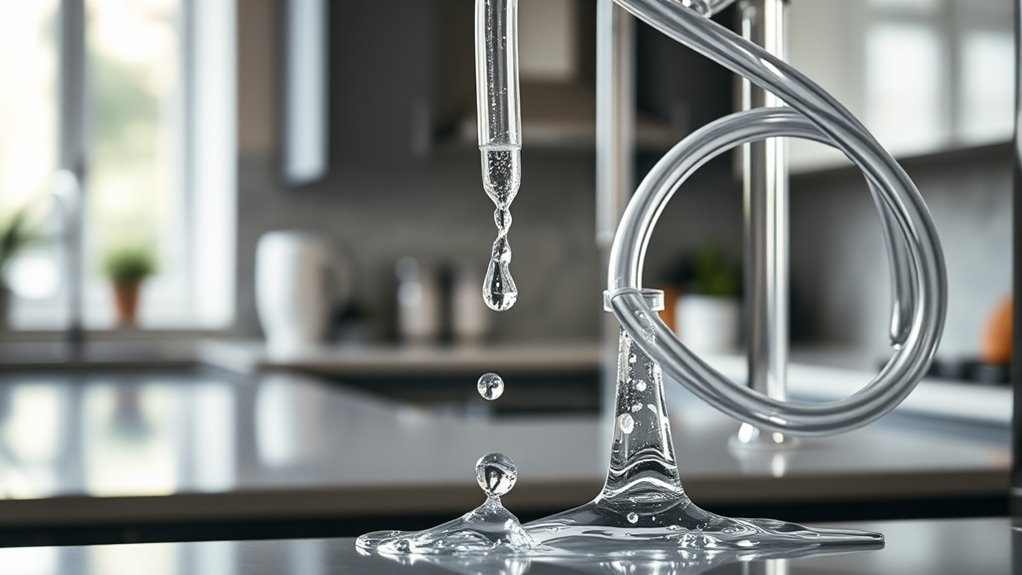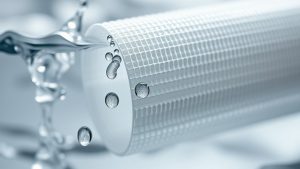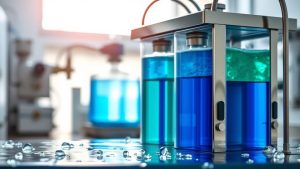
Reverse osmosis (RO) removes lead effectively by forcing water through a semi-permeable membrane with incredibly tiny pores, specifically designed to capture dissolved lead ions. This technology starts with pre-filtration to eliminate larger particles before the water is pushed through the membrane, which traps contaminants, including lead. After filtration, a post-filter enhances the water's taste and smell. Understanding how each component works can provide more insights into RO systems' overall efficiency in ensuring safe drinking water.
Reverse osmosis (RO) is a highly effective water purification technology that addresses the significant issue of lead contamination in drinking water. This process employs a semi-permeable membrane designed to filter out a wide range of impurities, including harmful heavy metals like lead. The efficiency of RO systems in removing lead is remarkable, boasting removal rates of 95 to 99 percent. This makes them one of the most reliable options for guaranteeing safe drinking water.
When you take into account the health risks associated with lead exposure, the importance of using an effective purification method becomes clear. Lead can cause severe neurological damage, particularly in children, leading to learning and behavioral problems. For adults, the risks include high blood pressure and kidney damage, while pregnant women may face developmental delays in their fetuses. The accumulation of lead in the body poses long-term health risks, emphasizing the need for consistent and thorough water purification. Ensuring drinking water is lead-free is crucial for health safety.
Lead exposure poses significant health risks, particularly neurological damage in children, highlighting the necessity for effective water purification.
In the UK, for instance, regulations stipulate that lead levels in drinking water mustn't exceed 10 µg/L, highlighting the need for effective removal methods.
The mechanism of lead removal in RO systems begins with pre-filtration, which eliminates larger particles and debris. This initial step guarantees that the semi-permeable membrane, with its minuscule pores of just 0.0001 microns, can effectively capture dissolved lead ions. Water is then forced through the RO membrane, trapping contaminants.
After this, a post-filter addresses any remaining taste and odor issues, guaranteeing the water isn't only safe but also pleasant to drink. Some advanced systems use ionic bonding alongside traditional filtration methods to enhance lead removal effectiveness.
Comparing RO with alternative filtration methods, you'll find that activated carbon filters, while effective against organic compounds, lack the capability to remove dissolved metals like lead. Distillation can also remove contaminants, but it's energy-intensive and time-consuming. In contrast, RO systems provide a higher efficiency for lead removal, making them a superior choice for households concerned about lead in their water supply.
When selecting an RO system, it's essential to evaluate your specific water needs and budget, along with the certification standards that confirm the system meets safety requirements.
Despite the high removal rates of contaminants, including heavy metals and PFAS, RO systems do generate some wastewater, which necessitates efficient designs to minimize environmental impact. Additionally, regular maintenance, including filter replacements, is important for maximum performance.
Not only do RO systems improve water taste and odor by eliminating impurities, but they also offer long-term cost savings compared to bottled water.
Conclusion
To sum up, reverse osmosis stands as a powerhouse in lead removal, effectively filtering out up to 99% of lead particles from your water. This technology works by forcing water through a semi-permeable membrane, trapping contaminants while allowing clean water to pass through. By investing in a reverse osmosis system, you're not just enhancing your water quality; you're taking a monumental leap toward safeguarding your health. With such efficiency, it's like having a superhero for your tap water!



